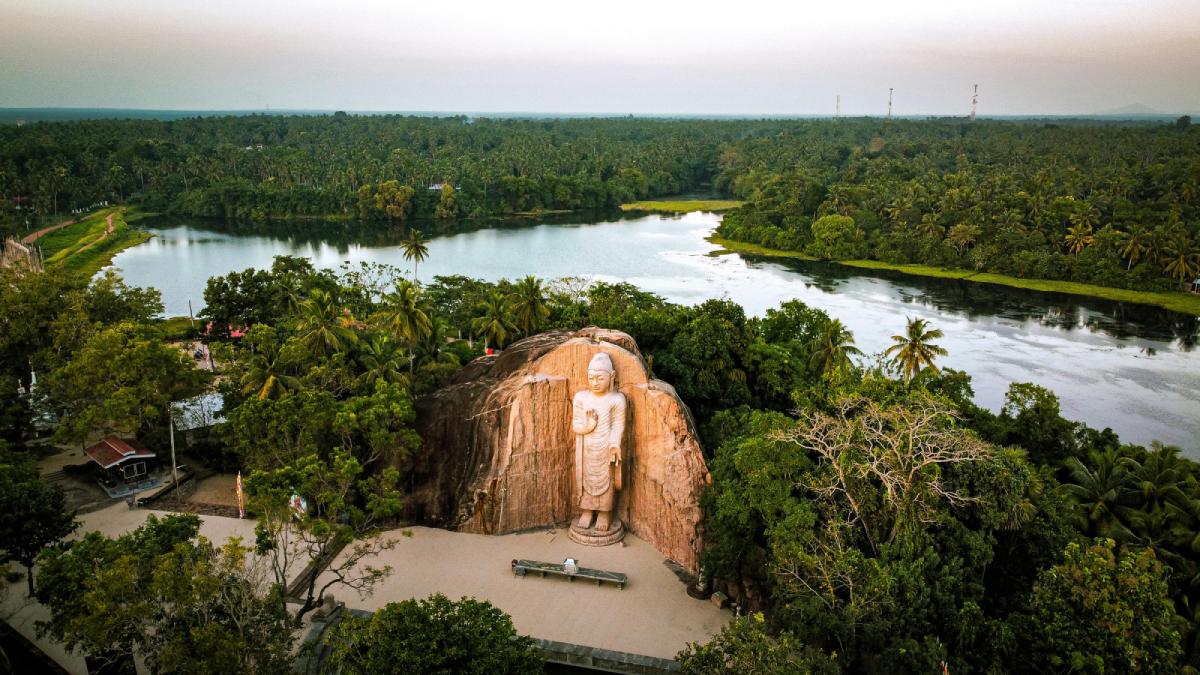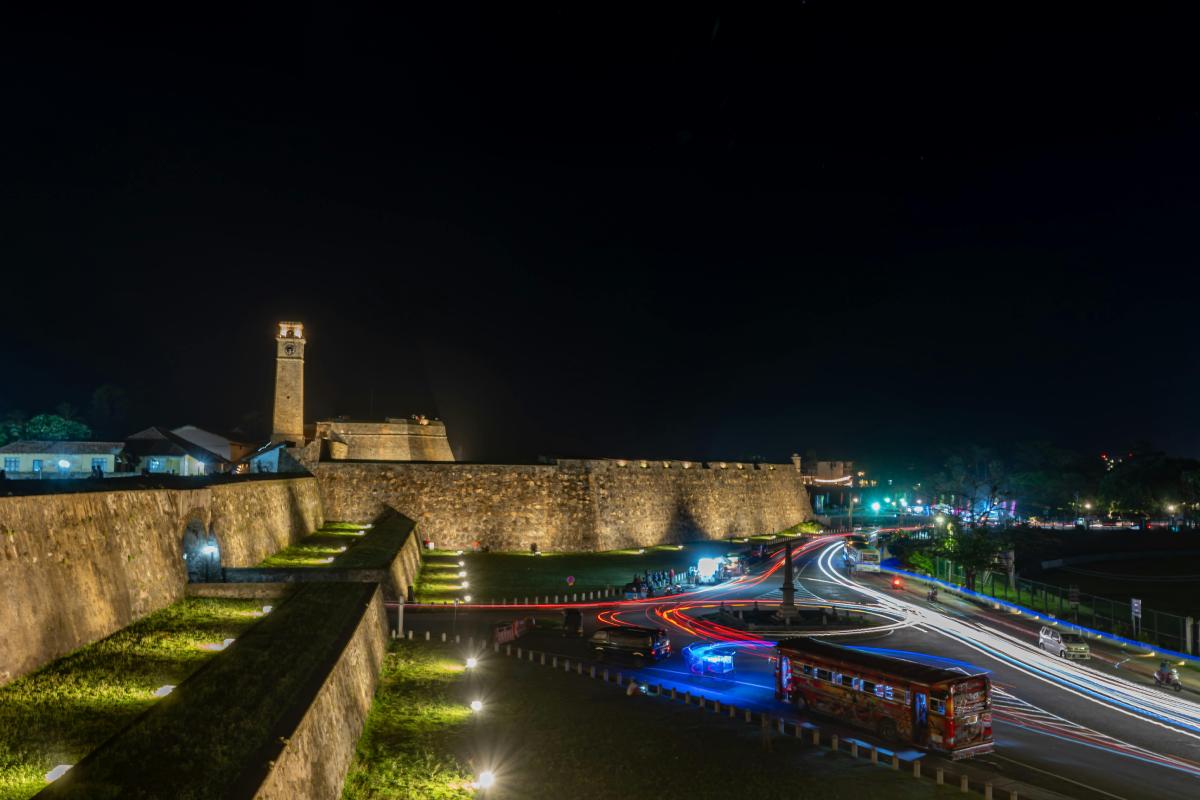Trincomalee, fondly called “Trinco” by locals, is a stunning coastal city on Sri Lanka’s eastern shores that remains somewhat of a hidden gem compared to the island’s more frequented tourist destinations. With its pristine beaches, fascinating historical sites, and natural wonders, Trincomalee offers visitors a perfect blend of relaxation, adventure, and cultural immersion. This comprehensive guide explores the top attractions that make Trincomalee a must-visit destination in Sri Lanka.
The Historical Significance of Trincomalee
Trincomalee boasts one of the world’s finest natural harbors, which has shaped its importance throughout history. The city has been a strategic naval base for various powers, including the Portuguese, Dutch, French, and British colonial rulers. This rich historical background has left behind a fascinating tapestry of cultural influences and architectural marvels that continue to captivate visitors today.
Fort Frederick: Where History Meets Panoramic Views
Standing prominently on Swami Rock peninsula is Fort Frederick, a testament to Trincomalee’s colonial past. Originally built by the Portuguese in 1624, the fort later fell into Dutch hands before being captured by the British in 1795. Today, visitors can walk through its impressive entrance, constructed from massive stone blocks, and explore the grounds that still house military buildings.
What makes Fort Frederick particularly special is not just its historical significance but also the population of spotted deer that roam freely within its walls. These gentle creatures have become accustomed to human presence, creating delightful photo opportunities for visitors.
As you climb to the fort’s highest points, you’ll be rewarded with breathtaking panoramic views of Trincomalee Harbor, the Bay of Bengal, and the surrounding coastline. The fort’s strategic location provides one of the best vantage points to appreciate the natural harbor that made Trincomalee so valuable throughout history.
Koneswaram Temple: The Sacred Cliff-Top Shrine
Perched dramatically atop Swami Rock within Fort Frederick’s grounds is the vibrantly colored Koneswaram Temple, one of Sri Lanka’s most important Hindu places of worship. Dating back over 2,500 years, this ancient temple is dedicated to Lord Shiva and holds immense religious significance.
The temple’s current structure is relatively modern, having been rebuilt in the 20th century after the original was largely destroyed by Portuguese colonizers. However, the site’s religious importance has remained undiminished. During your visit, you might witness Hindu devotees performing pujas (prayer rituals) amid the scent of incense and the sound of bells.
The temple’s cliff-top location, towering 130 meters above the ocean, offers spectacular views that have earned it the nickname “Temple of a Thousand Pillars.” Nearby stands the famous Lovers’ Leap, a cliff with a tragic legend about a Dutch officer’s daughter who jumped to her death after her father forbade her relationship with a local man.
Trincomalee Beaches: Pristine Coastal Paradises
Uppuveli Beach
Just 6 kilometers north of Trincomalee town lies Uppuveli Beach, a stretch of golden sand and clear blue waters that epitomizes tropical paradise. Less developed than some of Sri Lanka’s southern beaches, Uppuveli offers a more laid-back atmosphere where visitors can truly unwind.
The calm waters make Uppuveli ideal for swimming and water sports, particularly from April to September when the sea is at its most tranquil. The beach is dotted with small guesthouses and seafood restaurants serving freshly caught fish prepared with local spices.
Nilaveli Beach
Further north from Uppuveli is Nilaveli Beach, widely regarded as one of Sri Lanka’s most beautiful beaches. This expansive stretch of powdery white sand and crystal-clear turquoise waters feels remarkably unspoiled despite its growing popularity.
Nilaveli serves as the jumping-off point for visits to Pigeon Island National Park and offers excellent snorkeling and diving opportunities. The beach’s peaceful ambiance makes it perfect for those seeking tranquility away from crowded tourist spots.
Pigeon Island National Park: A Snorkeler’s Paradise
Visible from Nilaveli Beach and just a short boat ride away is Pigeon Island National Park, one of Sri Lanka’s two marine national parks. Named for the rock pigeon colonies that nest there, this small island is surrounded by coral reefs teeming with marine life.
The island features two main coral reef areas inhabited by over 100 coral species and 300 reef fish species. Snorkelers and divers regularly spot blacktip reef sharks, sea turtles, and a kaleidoscope of tropical fish among the corals. The best time to visit is between April and September when the water visibility is optimal and the sea is calm.
Conservation efforts are in place to protect this fragile ecosystem, so visitors are reminded to follow responsible tourism practices while exploring this underwater wonderland.
Kanniya Hot Springs: Natural Healing Waters
About 8 kilometers from Trincomalee town are the Kanniya Hot Springs, a unique natural attraction with historical and mythological significance. These seven wells contain water of varying temperatures, each said to have distinct healing properties.
According to Hindu mythology, the springs were created by Lord Vishnu to honor King Ravana, who struck the ground with his sword in seven places after his mother’s death. Today, locals and visitors alike believe in the therapeutic qualities of these mineral-rich waters.
Visitors can pour water over themselves using the provided buckets, but swimming is not allowed. The site has basic facilities and is particularly popular with local pilgrims. Early morning visits are recommended to avoid crowds and fully appreciate the serene atmosphere.
Marble Beach: Military-Maintained Perfection
Often overlooked by standard travel guides, Marble Beach (also known as Marble Bay Beach) is a hidden gem maintained by the Sri Lankan Air Force. Located within an air force base, the beach requires passing through a security checkpoint, but the extra effort is rewarded with one of the most pristine beaches in the region.
The beach gets its name from the smooth, rounded stones that resemble marbles scattered among the fine sand. The sheltered bay creates ideal swimming conditions, while the military maintenance ensures cleanliness and security rarely found at other beaches.
Facilities include cabanas for rent, a restaurant serving seafood and Sri Lankan cuisine, and water sports equipment. The controlled access means Marble Beach never feels overcrowded, even during peak tourist season.
Trincomalee War Cemetery: A Solemn Reminder
For those interested in World War II history, the Trincomalee War Cemetery offers a poignant reminder of the conflict’s far-reaching impact. Maintained by the Commonwealth War Graves Commission, this immaculately kept cemetery contains the graves of 364 soldiers from various Commonwealth countries who lost their lives during the war.
The neat rows of white headstones set against manicured lawns create a peaceful resting place for these fallen soldiers. Each headstone bears the name, rank, regiment, date of death, and age of the soldier, along with a personal inscription from their family. Visitors often remark on the powerful emotion evoked by seeing the young ages of many who died far from home.
Velgam Vehera: Ancient Buddhist Heritage
Also known as Natanar Kovil, Velgam Vehera is an ancient Buddhist temple dating back to the 2nd century BCE. Located about 16 kilometers northwest of Trincomalee, this archaeological site showcases the region’s significant Buddhist heritage before it became predominantly Hindu.
The temple complex features ancient stupas, stone pillars, and Buddha statues, all testament to the craftsmanship of ancient Sri Lankan architects and sculptors. What makes Velgam Vehera particularly interesting is its history as a place where Buddhism and Hinduism coexisted, with the site later being converted to a Hindu temple.
Today, the Archaeological Department of Sri Lanka protects this important cultural site, which offers visitors insights into the island’s complex religious history.
Whale Watching: Oceanic Giants
Trincomalee’s deep natural harbor and surrounding waters are home to diverse marine life, including several whale and dolphin species. The area has emerged as one of Sri Lanka’s premier whale-watching destinations, with the best season spanning from May to October.
During these months, visitors have excellent chances of spotting blue whales—the largest animals on Earth—as well as sperm whales, pilot whales, and spinner dolphins. Local tour operators offer morning boat excursions lasting 3-4 hours, with experienced guides who know the best locations for sightings.
Unlike the more famous whale-watching spot of Mirissa on Sri Lanka’s south coast, Trincomalee offers the advantage of calmer seas during the southwest monsoon period, making for a more comfortable experience.
Kunchikumban Aru Lagoon: Eco-Tourism Adventure
Nature enthusiasts should not miss Kunchikumban Aru Lagoon, a serene estuarine ecosystem located south of Trincomalee. This less-visited attraction offers boat safaris through mangrove forests where visitors can spot various bird species, crocodiles, and occasionally even elephants that come to drink from the lagoon’s fresh water.
Local fishermen offer guided tours in traditional boats, providing insights into both the ecosystem and their traditional fishing methods. The tranquil waterways, especially beautiful during sunrise and sunset, offer excellent photography opportunities and a peaceful contrast to the more active beach experiences.
Practical Information for Visiting Trincomalee
Best Time to Visit
The ideal time to visit Trincomalee is between April and October, during the dry season. This period offers sunny weather, calm seas perfect for water activities, and optimal conditions for whale watching. The off-season (November to March) brings occasional rain and rougher seas, though accommodation prices are lower and attractions less crowded.
Getting Around
Trincomalee town is relatively compact and can be explored on foot or by tuk-tuk. For visiting beaches and attractions further afield, options include:
- Renting a scooter or motorcycle (approximately 1,500-2,000 LKR per day)
- Hiring a tuk-tuk for the day (negotiate a rate beforehand)
- Arranging a car with driver through your accommodation
- Using local buses for budget travel to major destinations
Accommodation Options
Trincomalee offers accommodation options for all budgets:
- Luxury resorts like Trinco Blu by Cinnamon and Jungle Beach Resort
- Mid-range hotels and guesthouses in Trincomalee town
- Budget-friendly hostels and homestays in Uppuveli and Nilaveli
- Beach cabanas and eco-lodges for nature-focused stays
Most accommodations offer assistance with organizing tours and transportation to the attractions mentioned in this guide.
Conclusion: Trincomalee’s Timeless Appeal
Trincomalee’s blend of historical significance, natural beauty, and cultural richness makes it a destination that appeals to diverse travelers. Whether you’re seeking relaxation on pristine beaches, underwater adventures among coral reefs, cultural insights at ancient temples, or encounters with marine giants, Trincomalee delivers memorable experiences.
As Sri Lanka’s tourism industry continues to develop, Trincomalee remains somewhat off the beaten path compared to the island’s southern and central regions. This relative seclusion is part of its charm, offering visitors authentic experiences without overwhelming crowds.
For travelers willing to venture beyond Sri Lanka’s more established tourist circuit, Trincomalee rewards with its unspoiled landscapes, warm hospitality, and the serenity that comes from discovering a place where nature’s grandeur and human history have intertwined for millennia. As you plan your Sri Lankan adventure, consider giving Trincomalee the time it deserves to reveal its many treasures.


